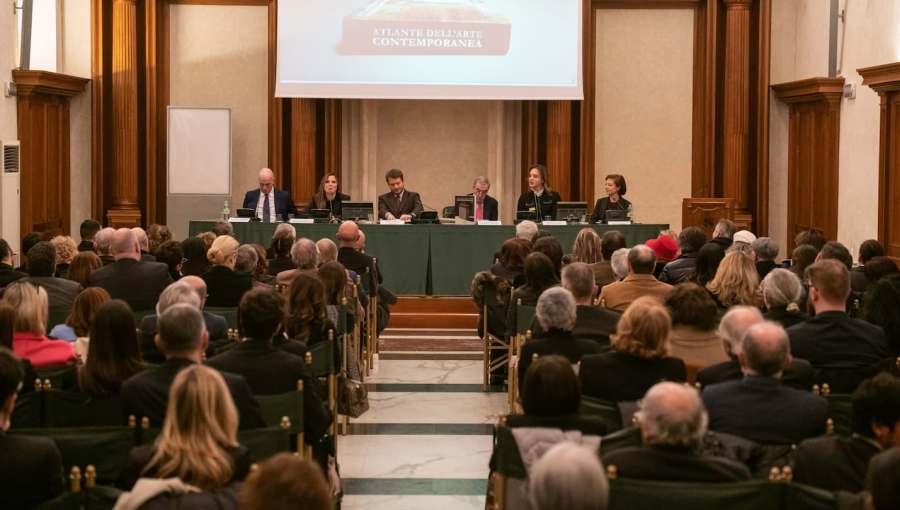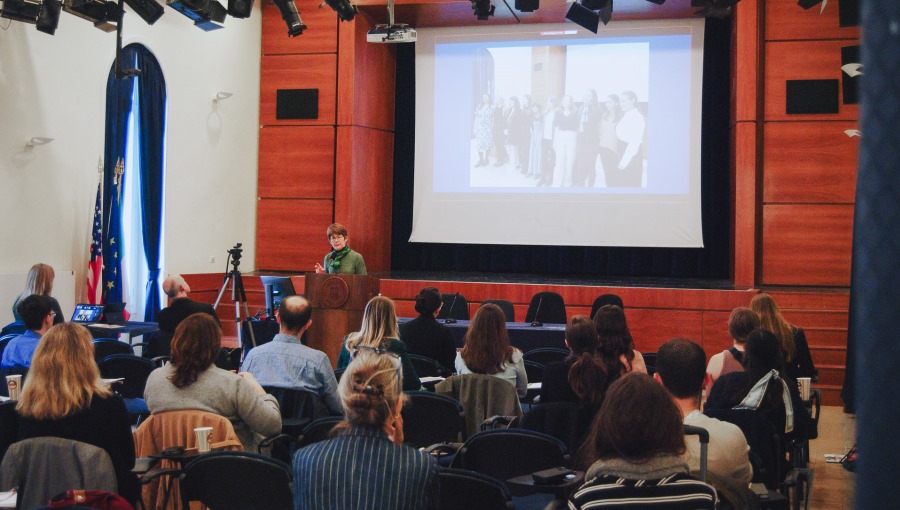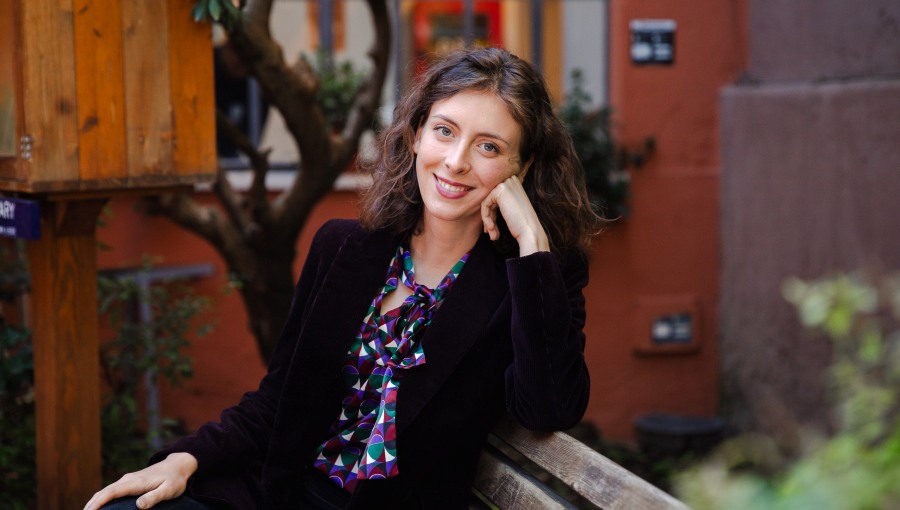The Mirror as Technological Device: a Lecture by Nefeli Misuraca
How did mirrors change the technique and meaning of art in the Renaissance?
Professor Brunella Antomarini welcomed Professor Nefeli Misuraca to her PH 304 Philosophy of Art and Beauty class on September 27, 2018 for a lecture called The Mirror as Technological Device. Professor Misuraca, who holds a Ph.D. in Literature and Art from Yale University, explored how such a simple device has affected the representation of reality in art.
Convex mirrors were not made of glass until after the late sixteenth century in Venice. A mirror is more than just a device, it is a technology, intended in the original sense of the word. It is used in such a way as to create something else, it is transformative. According to Leonardo da Vinci, when looking at something through a mirror, it is easier to see the object’s defects.
The lighting from a mirror can change the appearance of an object or a room by illuminating some areas more than others. When a mirror is placed in front of a painting, it captures the light and reflects it to focus the attention on specific parts of the image. In The Beheading of St. John the Baptist by Caravaggio, the focal points in the foreground are brighter than the rest of the painting.
Mirrors are recurrent in art from the Renaissance to the 18th century. Numerous paintings depict a woman looking at herself in the mirror. In the case of The Arnolfini Wedding, a 1434 painting by Flemish painter Jan van Eyck, the mirror reflects the two witnesses who are in front of the spouses. The only way to see these individuals is through the mirror. Because of this detail, the painting could be considered a marriage contract, as the mirror identifies the two individuals as the witnesses of the agreement.
But mirrors could also have a negative connotation. They are often associated with vanity and with terrible things that might come from looking at one’s own reflection. Impressionists get rid of mirrors in their paintings, which tend to be more homogeneous and lack focal points.
Professor Misuraca concluded her lecture by explaining that mirrors transform the world and help construct reality. Rather than a reflection of reality, mirrors are a reflection on reality.






